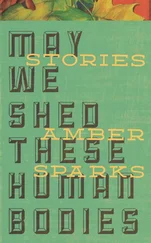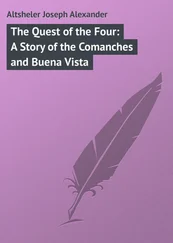Effects. —For several days after the ingestion of the foregoing materials this volunteer experienced some light epigastric fullness and eructations of gas after a meal. On the third day a diarrhea with frequent, painless, watery, and rather gaseous evacuations developed. The diarrhea lasted about a week. It was still present on May 7, on which date, as will presently appear, this volunteer participated in another experiment which included the ingestion of scales, urine, and feces.
3 j
Experiment Group No. 3.
On May 7 blood, nasopharyngeal secretions, scales, urine, and feces were obtained from some patients at the United States Pellagra Hospital, Spartanburg, S. C, and used for the inoculation of each of a group of five volunteers, G-J., S-E., T-WF., W-DG, and W-GA. A sixth volunteer, G-MHF., received blood only.
(a) Blood. —The blood was drawn from the general circulation of each of three patients, defibrinated and then pooled. Of this, 7 c. c. were injected subcutaneously into each of the six volunteers mentioned. The time elapsing between drawing and injecting the blood was under two hours.
To the pooled blood, one of the patients (case No. 5), with a mild ninth recurrent attack, contributed 10 c. c.; one (case No. 6) ? with a moderately acute second attack, 15.5 c. c.; and one (case No. 7), with a severe acute second attack, 20 c. c. The patients furnished, therefore, 1.5 c. c, 2.5 c. c, and 3 c. c, respectively, of defibrinated blood for the inoculation of each volunteer.
(b) Secretions. —Secretions were obtained from four patients and, after mixing, used for the inoculation of the five men above mentioned. One of the patients (case No. 1) was the same as the one that furnished the secretions for the first experiment (experiment group No. 1, (b) ). The three others are cases No. 5, No. 6, and No. 7, already briefly characterized in describing the preceding blood inoculation.
The nose and nasopharynx of each of the four patients were carefully wiped out with a separate set of five cotton swabs. The secretions thus obtained were mixed by rinsing and soaking the swabs in some normal salt solution.
The inoculation was made by rubbing over the mucosa of each side of the nose and nasopharynx each of a set of three swabs soaked in the mixture just described. In this way a fresh set of six swabs was used for each volunteer. The time elapsing between collecting and inoculating was less than two hours.
(c) Scales. —-Scales were freshly scraped from affected areas of skin of two patients, cases No. 1 and No. 7, previously characterized. Case No. 1 furnished 0.1 gm. and No. 7, 0.22 gm.
These were mixed and then divided approximately equally among the five volunteers each of whom swallowed his portion in the form of a " powder" about seven hours after they were collected and shortly after taking the dose of urine and feces next to be described.
(d) Urine; feces. —A specimen of urine and one of feces was obtained from each of the same three patients (cases No. 5, No. 6, and No. 7) as furnished the blood. In order to make sure of having the feces when wanted a simple water enema was used to get the specimens, none of which was diarrheal.
Ten cubic centimeters of urine and 5 grams of solid feces from each of the three corresponding specimens were worked up into a pilular mass with flour. About 15 minutes after taking 20 grains of sodium bicarbonate each of the five volunteers ingested an approximately equal portion of the mass. Each took therefore the equiva-
lent of about 2 c. c. of urine and 1 gram of feces from each of the three patients.
The urine and fecal specimens were between 3 and 9 hours old when ingested.
Effects. —About 10 days after the inoculation, one of the volunteers, T-WF, noted a slightly enlarged and somewhat tender lymph gland above the Poupart's ligament of the side of the abdomen that was the site of the blood injection. This gradually subsided. None of the other volunteers experienced any inconvenience, although, as will be recalled, one of them (G-J), on the date of this experiment, had not yet completely recovered from a rather marked attack of diarrhea following a previous ingestion experiment.
Experiment Group No. 4.
On June 7, 1916, urine and feces were obtained from a patient (female) at the Washington Asylum Hospital, Washington, D. C. The patient (case No. 8) had a typhoidal first attack, from which she died 10 days later (June 17,1916).
The urine was a catheter specimen, drawn at 8.45 a. m., June 7.
The fecal matter consisted of two specimens; one, fairly liquid, was passed at about 9 p. m., June 6; the second, of soft puttylike consistency, was passed about 7 a. m., June 7.
Ten cubic centimeters of the urine, 1 gram of the first and 5 grams of the second fecal specimen were worked up into a pilular mass with cracker crumbs and a little flour. Gelatine capsules were filled, approximately equally divided, and at 12.30 p. m. ingested by five volunteers, C-EH, D-WF, McC-GW, G-J, and S-AM. Fifteen minutes before this, each volunteer took 10 grains of sodium bicarbonate.
Effects. —Some hours after ingesting the above one of the volunteers, S-AM, developed abdominal discomfort accompanied by abnormal, gaseous evacuations. The movements increased in frequency, developing into a marked diarrhea, which lasted about two weeks. He has been well since.
Another, McC-GW, experienced a little temporary gastric discomfort immediately after talcing the material; nothing of note since.
None of the others of this group experienced any appreciable effects.
Experiment Group No. 5.
On June 8,1916, another experiment was made with urine and feces from the ,patient (case No. 8) furnishing these materials for the preceding experiment, No. 7.
On this occasion the fecal matter consisted of three specimens. One of these, now 39 hours old, was passed at 7 a. m. June 7, and had
served in experiment No. 4; it had been kept at room temperature. The second was passed at 11.30 p. m. June 7, and the third at 7.15 a. m. June 8. Both of these latter specimens were liquid.
A urine specimen was drawn by catheter at 8.45 a. m. June 8.
Three grams of the first, 3 c. c. of the second, and 3 c. c. of the third fecal specimen, with 6 c. c. of urine, were prepared as in the preceding experiment, and at 12 o'clock equally divided among the three volunteers G-J, L-JP, and S-EA. Each received, therefore, the equivalent of 1 gram of each of the three fecal specimens and of 2 c. c. of the urine. About 20 minutes before taking this material each volunteer had taken 10 grains of sodium bicarbonate.
Effects. —Although two of these volunteers (L-JP and S-EA) had temporary attacks of looseness of the bowels immediately preceding the experiment, neither they nor the third who had participated in each of the preceding ingestion experiments experienced any inconvenience following the ingestion of this experimental material.
Experiment Group No. 6.
On June 13, 1916, urine and feces were obtained from a patient at the Charity Hospital, New Orleans, La. This patient (case No. 9) had a mild first attack.
The urine was obtained by catheter at 8 a. m. The stool, a liquid one, was passed at about 7.15 a. m., after a dose of magnesium sulphate.
Measured quantities of this material were prepared as in experiments No. 4 and No. 5 at 1.20 p. m. and ingested by five volunteers, A-CW, G-J, LtGB, M-MB, and W-CL, each one getting the equivalent of 2 c. c. of feces and 2 c. c. of urine. Twenty-five minutes before taking this material each volunteer took 20 grains of sodium bicarbonate.
Effects. —None of this group of volunteers experienced any appreciable effects.
Experiment Group No. 7.
On June 25,1916, material was obtained at Spartanburg, S. O, for a final experiment.
Читать дальше











